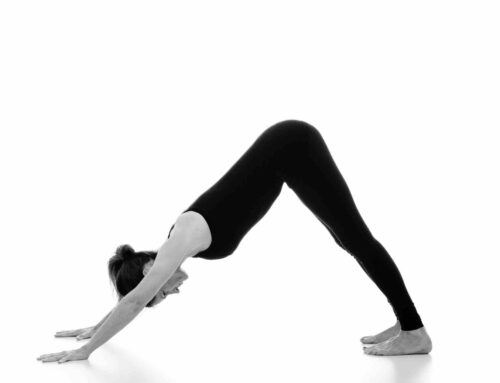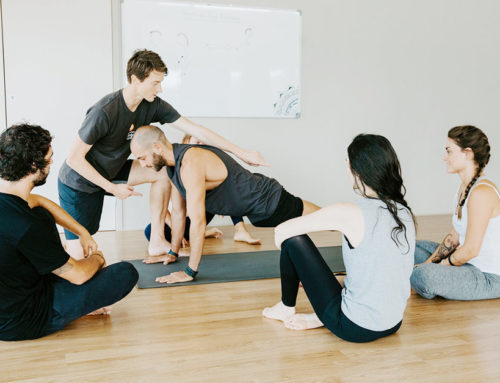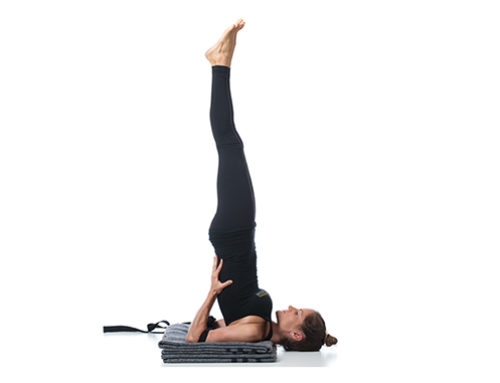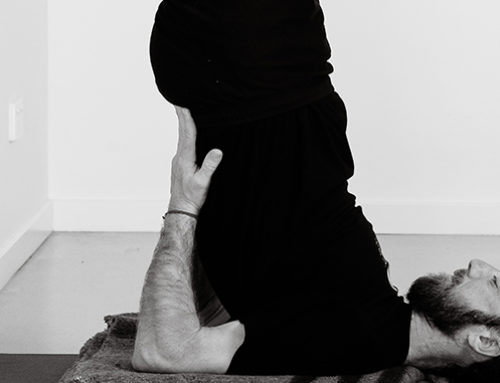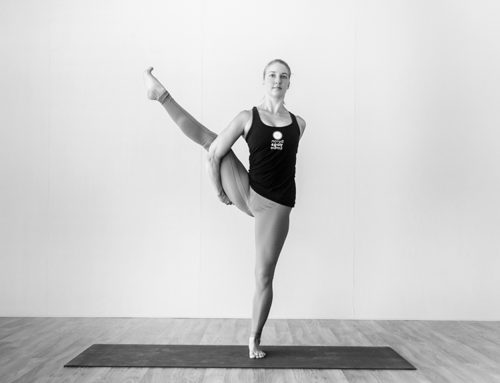
Often what is least palatable is best for us. Utkatasana is such a pose. As our thighs and belly begin to burn, we may back out of the pose or take a stiff upper lip and persevere. The challenge is to persist without becoming rigid. Not only does practising Utkatasana help build stamina but, as Byron Yoga Centre teacher trainer Michael Nazar explains, it brings concentration and the stability and strength which helps all standing poses.
Sanskrit
Utkata – fierce, powerful
Asana – physical posture
Benefits
Utkatasana builds strength in the ankles, knees, calves, is therapeutic for flat feet. It is extremely effective at strengthening the quadriceps and hamstrings, which contribute to knee stability. The erector spinae muscles in the back become strong, the ankles, calves and shoulders develop greater flexibility while the heart, diaphragm and abdominal organs are toned. Utkatasana stimulates the muladhara root charka, which helps you find your path in life, put down roots and find physical and spiritual nourishment.
Contraindications and cautions
Utkatasana should be avoid by people with destabilised knees, particularly strained ligaments or damaged meniscus. Those with high blood pressure need to keep their arms lower than their heart while people with sacroiliac or lower back problems or who are menstruating should proceed gently.
Finding your body in space
Finding correct alignment between your knees and feet is important not only for developing strength and flexibility, but for avoiding injuries, particularly to your knees. Although the alignment of your torso will differ according to how deeply you squat, your knees should always be directly over the centre of your toes. While keeping the feet and knees apart in the beginner's variation makes balancing easier, keeping your ankles and knees together will help you maintain alignment.
To compensate for wobbly balance, do Utkatasana with your feet and knees together and your heels 25-35 centimetres from a wall. As you bend into the squat and hinge forward from the hips, rest the back of your pelvis against the wall. "There is a tendency for the pelvis to tip forward, which affects the movement of the spine, creating a deep curve in the lower back," says Michael. "To counter this, pull in the lower abdomen and slightly tuck the tailbone under to retain a natural lower back curve. This stabilises your centre of gravity which is between your navel and pubic bone."
The deeper you squat in the pose, the more your body must resist gravity. This requires huge strength from the quadriceps, one of the largest muscles in the body. "People with problematic knees will benefit from Utkatasana because it strengthens the muscles which support them," says Michael. "But it's important to be gentle because the lower legs bones can rotate when the knees are bent, which increases the risk of injury. Those with knee injuries should proceed cautiously, squatting shallowly and coming out if there is even a hint of knee pain."

For those with tight shoulders, keep your hands apart as you raise your arms. "Your scapula need to move back and down your torso with your arms drawing back into the shoulder sockets, your neck long and your chest lifting," says Michael.
Extending the arms overhead allows for expanded breathing capacity which enables better concentration and prepares the mind for meditation. "Your breath should dictate the posture rather than vice versa, so if your breathing becomes grasping, uneven or restricted, you need to back out and start again," says Michael. "Aim for a natural and spontaneous breath, with even lengths between in-breaths and out-breaths."
Overcoming your Archilles' heel
In Homer's tale of Troy, the great warrior Archilles' one fatal weakness is his heel. The depth of your squat in Utkatasana is governed by the strength of your quadriceps which contact eccentrically to keep you from falling to the ground, and the length of your calve muscle and your Archilles heel, known as your Calcaneal tendon, which allows you to squat deeply while keeping you balanced. "Your upper and lower legs work together to anchor you to the ground, which cultivates a feeling of putting down roots and drawing in energy from the earth," Michael says. "When you're ready to come out of the pose, press down into the earth with your feet, and imagine the earth's energy entering the roots of your feet, into the trunks of your legs and the branches of your hands and head."

